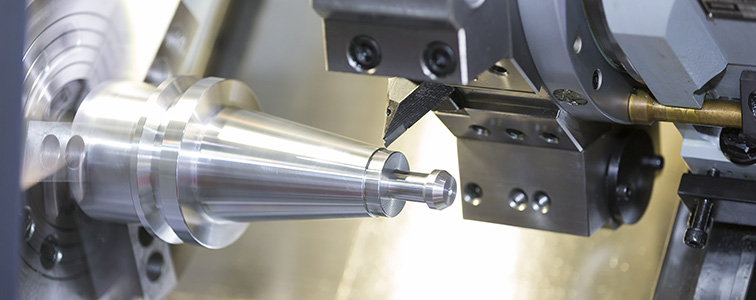CNC turning plays a vital role in modern manufacturing, enabling high-precision production of cylindrical and conical components. As manufacturers face increasing pressure to reduce costs while maintaining quality, understanding the cost factors associated with CNC turning becomes essential. In this article, we examine the primary cost drivers in CNC turning and discuss strategies to optimize manufacturing expenses.
Introduction
CNC turning, a subtractive machining process, involves rotating a workpiece while a cutting tool removes material to create precise components. Manufacturers rely on CNC turning for parts used in industries such as aerospace, automotive, medical devices, and electronics. Despite its advantages in precision and repeatability, the cost of CNC turning can vary significantly based on several factors. A clear grasp of these factors allows manufacturers to make informed decisions, optimize processes, and ultimately reduce production expenses.
Key Cost Factors in CNC Turning
1. Equipment and Machine Costs
Investing in CNC turning machines often represents one of the largest capital expenditures. High-quality CNC lathes equipped with advanced features command a higher price tag. Manufacturers must consider not only the initial purchase cost but also depreciation, which affects the overall cost per part. In addition, the cost of machine upgrades and integration with automation systems influences long-term expenses.
2. Tooling Expenses
Cutting tools play a critical role in CNC turning, as they directly affect part quality and production speed. The price of tools depends on material, coating, and durability. Manufacturers use various cutting tools, such as inserts, drills, and boring bars, and must frequently replace them to maintain precision. Optimizing tool life through proper selection, maintenance, and usage strategies can reduce overall tooling expenses.
3. Material Costs
Material selection directly impacts CNC turning costs. Manufacturers work with metals, plastics, and composites, each with its own price point. The quality and availability of raw materials also affect cost. Optimizing material usage by reducing waste during machining and improving process planning helps manufacturers control material costs while meeting design requirements.
4. Labor Costs
Skilled operators and programmers contribute significantly to CNC turning operations. Labor costs include wages, training, and the time spent on programming, machine setup, and operation. Even though CNC machines automate many processes, experienced personnel remain essential for optimizing programs, troubleshooting issues, and maintaining equipment. Investing in training programs and adopting user-friendly software can improve productivity and reduce labor expenses.

5. Setup and Programming Time
The time spent on setup and programming has a direct impact on production costs. Each changeover between different part designs or batches requires recalibration of the machine and adjustments to the tool paths. Efficient planning and the use of standardized procedures can reduce setup time. Manufacturers who invest in advanced CAD/CAM software benefit from optimized programs that reduce cycle time and enhance overall production efficiency.
6. Maintenance and Downtime
Regular maintenance and unforeseen downtime significantly contribute to CNC turning costs. Preventive maintenance ensures that machines operate at peak efficiency and minimizes unexpected failures. Manufacturers must balance maintenance schedules with production demands to reduce the risk of costly interruptions. Moreover, investments in real-time monitoring systems help detect issues early, allowing timely intervention that prevents extended downtime.
7. Energy Consumption
CNC turning machines consume considerable energy during operation. The cost of energy usage can add up, especially in high-volume production facilities. Energy-efficient machines, coupled with optimized machining strategies that reduce cycle times, contribute to lowering overall energy costs. Manufacturers can also explore renewable energy sources or energy management systems to further reduce expenses.
8. Quality Control and Scrap Rates
Quality control measures, including inspection and testing, add to production costs. High scrap rates resulting from machining errors or material inconsistencies drive up expenses by wasting raw materials and requiring rework. Implementing robust quality assurance practices and integrating in-process monitoring systems help maintain consistent quality. Reducing scrap and rework improves overall cost efficiency and enhances customer satisfaction.
9. Production Volume and Economies of Scale
The number of parts produced directly influences cost per unit. Manufacturers benefit from economies of scale when production volumes are high. Increased production reduces the impact of fixed costs, such as equipment depreciation and setup time, on each individual part. Manufacturers can achieve lower costs per part by optimizing batch sizes and streamlining production schedules.
Strategies to Optimize CNC Turning Costs
Process Optimization
Manufacturers should continuously analyze their machining processes to identify inefficiencies. Using advanced simulation software enables engineers to model machining operations, optimize tool paths, and predict cycle times. Streamlined processes reduce waste, lower energy consumption, and minimize setup time.
Efficient Tool Management
Implementing a proactive tool management system helps maximize tool life. Monitoring tool wear, scheduling timely replacements, and using high-performance cutting tools contribute to cost savings. Manufacturers can also explore the use of advanced tool coatings and materials to extend tool life and maintain quality.
Automation and Digital Integration
Automation drives efficiency in CNC turning. Integrating robotics for material handling, automated tool changers, and advanced CNC controllers reduces human error and labor costs. Digital integration, including real-time monitoring and predictive maintenance systems, helps manufacturers address issues before they escalate, thereby reducing downtime and maintenance costs.
Lean Manufacturing Practices
Adopting lean manufacturing principles, such as just-in-time production and continuous improvement, allows manufacturers to streamline workflows and reduce waste. Lean strategies focus on eliminating non-value-added activities, optimizing material flow, and improving overall process efficiency, ultimately lowering production costs.
Investing in Workforce Training
A skilled workforce remains a key asset in CNC turning operations. Investing in training and continuous education improves operator proficiency, enhances machine programming, and promotes best practices. A well-trained team can optimize machine usage, reduce setup times, and contribute to overall cost efficiency.
Conclusion
Understanding and managing the cost factors in CNC turning play a crucial role in maintaining competitiveness in modern manufacturing. Equipment investment, tooling, material selection, labor, setup time, maintenance, energy consumption, quality control, and production volume all contribute to the final cost per part. Manufacturers who embrace process optimization, efficient tool management, automation, lean practices, and workforce training can significantly reduce production expenses while maintaining high quality. By addressing these cost drivers and implementing targeted strategies, companies can achieve greater efficiency, lower costs, and improved profitability in CNC turning operations.



